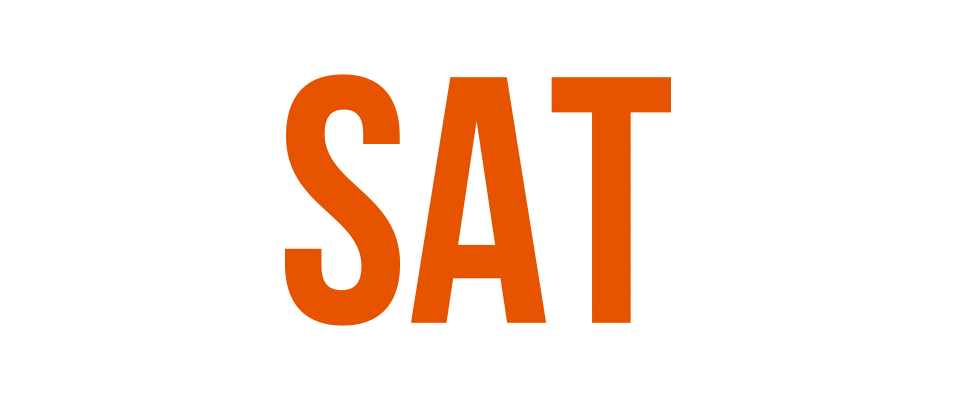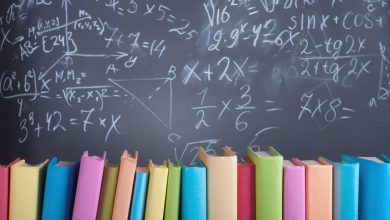Students, the Digital SAT, or dSAT, is here, and it’s more than a new test—it’s a whole new experience. Moving from the traditional paper-based model to a dynamic digital platform, these Digital SAT Changes are set to redefine how you approach one of the most important exams of your academic journey. Our article is tailored for you, aiming to make you not only familiar with the dSAT but fully prepared to master it. Together, we’ll explore these digital SAT changes, understand what they mean for you, and arm ourselves with the strategies and insights needed to excel in this innovative and exciting new format.
When Does the SAT Change to Digital?
As technology permeates every aspect of our lives, our education system is no exception. In response to this digital evolution, the College Board has already begun introducing the Digital SAT to international students in March 2023, ushering in a fresh perspective to the SAT, which has been a cornerstone of academic assessment for decades.
However, it’s important to note that the digital SAT will not be available to high school students in the U.S. until spring 2024. Digital PSATs, on the other hand, will be available to students everywhere in fall 2023. This phased introduction ensures a smooth transition to the digital format, enabling the College Board to make any necessary adjustments based on the initial rounds of testing.
The transformation aligns the SAT with the digital competencies vital for success in the 21st-century world. Moreover, it streamlines the student’s testing experience, reflecting the College Board’s commitment to student-centered innovation.
Key Changes in the Digital SAT
| Feature | Traditional SAT | Digital SAT (dSAT) |
|---|---|---|
| Format | Paper-based test | Administered digitally |
| Test Duration | 3 hours, plus an optional 50 minutes for the Essay | 2 hours and 14 minutes in total |
| Test Adaptivity | Uniform difficulty throughout the test | Adaptive difficulty based on performance in initial sections |
| Calculator Policy | Limited to certain sections of the Math test | Full access to an integrated digital calculator throughout |
| Score Range | 400 to 1600 | 400 to 1600 |
| Unscored Content | Inclusion of a fifth section containing unscored questions | Incorporation of four unscored questions in both Reading & Writing and Math sections; occasional fifth section of unscored questions |
| Scoring Reports | Available 2-3 weeks post-test with an option to request question-and-answer service | Scores are accessible just days after the test, but without access to specific questions and answers |
In contrast to the traditional 3-hour paper-and-pencil test, the digital SAT has been restructured and refined to better serve its test-takers. The test duration has been reduced to 2 hours and 14 minutes, making the exam less taxing and more efficient while respecting the need to balance academic rigor and student well-being. In addition to the shift in test duration, the dSAT introduces a user-friendly digital interface, marking a significant departure from the traditional “bubble” test format. This interface not only modernizes the test-taking experience but also facilitates a more intuitive and engaging interaction with the test content.
At its core, the dSAT retains the crucial Reading & Writing, and Math sections, mirroring the academic skills the SAT has always sought to measure. However, a noteworthy change lies in the division of each section into two modules, which introduces an element of adaptivity, with the second module’s difficulty level depending on the student’s performance in the first module.
Specifically, each Reading & Writing module will span 32 minutes and contain 27 items, while each Math module will extend for 35 minutes with 22 items. This level of detail in the test structure empowers students to strategize their test-taking approach effectively and underscores the dSAT’s focus on student agency.
Changes to the Reading and Writing Section
 The shift to the Digital SAT also substantially changes the Reading and Writing section. In contrast to the two sections (Reading and Writing & Language) in the traditional SAT, the dSAT combines them into a single ‘Reading and Writing’ section, presenting a blend of ‘Reading’ style questions and ‘Writing and Language’ style questions, requiring students to demonstrate their proficiency in both these areas within the same section.
The shift to the Digital SAT also substantially changes the Reading and Writing section. In contrast to the two sections (Reading and Writing & Language) in the traditional SAT, the dSAT combines them into a single ‘Reading and Writing’ section, presenting a blend of ‘Reading’ style questions and ‘Writing and Language’ style questions, requiring students to demonstrate their proficiency in both these areas within the same section.
Each Reading and Writing section in the dSAT will consist of 27 questions spread over a duration of 32 minutes. All passages in the Reading and Writing section will be between 25 and 150 words, a significant reduction from the 500-750 word passages in the old SAT. Moreover, each passage will be associated with only one question.
As for the question types, you will no longer encounter questions about moving sentences within a paragraph, keeping or deleting a sentence, adding a sentence, or combining two sentences. On the other hand, the new SAT might present a passage featuring a series of bullet points and ask us to select the answer that effectively synthesizes them to achieve a certain aim.
The Reading and Writing section now includes a wider variety of passage types, such as literature passages featuring classic authors like Shakespeare and Oscar Wilde and newly introduced Humanities passages. Literature passages can also include poems and excerpts from plays, broadening the scope of text types students will encounter.
The Reading and Writing section will also be divided into two parts: the first will test Reading skills, and the second will test Writing skills. Furthermore, this section is section-adaptive, meaning the difficulty level of the second module will be determined by the student’s performance in the first module.
The dSAT Reading and Writing section is organized around four content domains:
- Craft & Structure
- Information & Ideas for Reading
- Standard English Conventions
- Expression of Ideas for Writing
These domains focus on essential aspects of literacy and language mastery. For the Reading portion, the domains of Craft & Structure and Information & Ideas are emphasized, reflecting a nuanced understanding of textual interpretation and comprehension. On the other hand, the Writing segment prioritizes Standard English Conventions and Expression of Ideas, underscoring the importance of grammatical accuracy and the articulate presentation of thoughts.
The content domains and question type group questions together, and they increase in difficulty as the student progresses. You can expect vocabulary questions on the digital SAT as well.
Lastly, the Reading and Writing section will now be section-adaptive. The student’s performance will influence the difficulty level of the second module in this section in the first module, allowing the test to cater to the unique strengths of individual test-takers, making the dSAT a truly personalized assessment tool.
Changes to the Digital SAT Math Section
 The Digital SAT introduces several key changes to the Math section. One of the most significant digital SAT changes is the reduction in the overall testing time—from 3 hours in the traditional SAT to 2 hours and 15 minutes in the digital SAT. This change reflects the College Board’s commitment to creating a less stressful and more efficient testing experience for students.
The Digital SAT introduces several key changes to the Math section. One of the most significant digital SAT changes is the reduction in the overall testing time—from 3 hours in the traditional SAT to 2 hours and 15 minutes in the digital SAT. This change reflects the College Board’s commitment to creating a less stressful and more efficient testing experience for students.
In terms of content, the Math section on the dSAT will cover fewer topics than its predecessor, focusing on the most relevant skills required for college and career success. The questions will also be shorter, resulting in less reading and more straightforward problem-solving.
The dSAT Math section will be comprised of 44 questions, divided evenly between two modules, each lasting 35 minutes. Approximately 75% of the questions will be multiple-choice, while the remaining 25% will require student-produced responses. Around 30% of the questions will be in-context, or word problems, with the average length of these questions (less than 50 6-character words) significantly reduced compared to the traditional SAT.
The content of the Math section is organized into four primary domains: Algebra, Advanced Mathematics, Problem-Solving and Data Analysis, and Geometry and Trigonometry. Algebra and Advanced Mathematics each comprise around 35% of the section, while Problem-Solving and Data Analysis, and Geometry and Trigonometry each comprise around 15%.
A noteworthy change in the dSAT Math section is the allowance of calculators throughout the entire section. In contrast to the traditional SAT, which restricted calculator use to certain parts of the test, the digital SAT provides continuous access to a built-in Desmos calculator, reflecting the evolving role of technology in mathematics and allowing students to focus more on problem-solving and strategic thinking.
Furthermore, the student-produced response questions on the dSAT Math section can now include more characters and can be negative, which, along with the section-adaptive nature of the test, where the difficulty of the second module is determined by the student’s performance in the first, makes the dSAT a truly personalized and flexible assessment tool.
Unraveling the Intricacies of the New Format
As we transition into the era of the Digital SAT, it’s essential to delve into the intricacies of the new format. The dSAT pioneers a dynamic structure where certain test elements are adapted based on a student’s performance. This adaptivity caters to the diverse strengths of test-takers, providing a more personalized and student-centric testing experience.
One of the most significant digital SAT changes is the unrestricted use of calculators throughout the Math section. This marks a considerable departure from the traditional SAT, where calculator use was limited. This digital SAT change acknowledges the essential role of technology in modern mathematical problem-solving and allows students to focus on their conceptual understanding and strategic thinking.
Embracing the New Rules and Tools
The digital SAT is administered through the College Board’s cutting-edge Bluebook app. This digital transition is not merely about changing the mode of delivery; it’s about augmenting the test-taking experience with a suite of digital tools designed to aid students.
The Bluebook app offers functionalities that simulate the paper testing experience in a digital environment. Students can annotate, cross out answer choices, and flag questions for review later. These tools empower students with more control over their test-taking process, allowing them to strategize and manage their time effectively.
Demystifying the dSAT Scoring System
While the Digital SAT represents a significant transformation in the test’s format, the scoring system maintains its essential structure. Like its traditional counterpart, the digital SAT provides a total score ranging from 400 to 1600, with individual section scores from 200 to 800. This consistency ensures that dSAT scores are equivalent to and comparable with traditional SAT scores, preserving the SAT’s reliability as a measure of academic readiness.
| Score Range | Interpretation |
|---|---|
| 400-500 | Demonstrates foundational skills and a basic understanding of key concepts. |
| 500-600 | Shows competent handling of standard school-level subjects and problems. |
| 600-700 | Reflects strong proficiency in academic skills relevant to college readiness. |
| 700-800 | Indicates an exceptional grasp of college-level concepts and challenges. |
However, the dSAT scoring system introduces a few innovative features. The test incorporates four unscored questions in each section, distributed throughout the test. These questions, which do not affect the final score, support the College Board’s ongoing efforts to refine and improve the test.
One significant digital SAT change in scoring is the variation in the point value of each question. Questions on the digital SAT are no longer worth the same amount of points—instead, they’re weighted, with each question roughly valued between 10-20 points and potentially up to 30 points for some of the more difficult questions.
The level of difficulty of the second module in each section also impacts your potential score. If you receive an easier second module, your score in that section is capped between 530 and 590. If you receive a harder second module, the required raw score range for Reading & Writing is 16-20, and for Math, it’s 11-14, although these are not yet precisely defined.
The Swift Scoring Report and Enhanced Features
 The digital SAT comes with a myriad of advantages, the most notable of which is the expedited availability of scoring reports. Unlike the traditional 2-3 week wait period, the digital format enables students to receive their scores just days after the test. This swift feedback loop allows for more immediate reflection and planning for future test attempts.
The digital SAT comes with a myriad of advantages, the most notable of which is the expedited availability of scoring reports. Unlike the traditional 2-3 week wait period, the digital format enables students to receive their scores just days after the test. This swift feedback loop allows for more immediate reflection and planning for future test attempts.
The digital SAT addresses many of the challenges associated with the traditional SAT. The test content is generally more engaging, with even the less interesting topics lasting only for one question. The digital format streamlines many logistical issues associated with the traditional SAT, such as shipping, securing, distributing, and collecting test materials. These digital SAT changes enhance the overall test-taking experience, reducing user friction at every step.
Another advantage is the increased time per question, which is more generous than the current SAT and significantly more than the ACT. The timing is handled by the platform, eliminating potential human error from proctors. The digital format also paves the way for more flexible school-day testing windows.
The digital SAT also removes the need for a separately timed fifth section, as it embeds pretesting within the test for a more streamlined testing experience.
Despite these digital SAT changes, the dSAT maintains a higher level of security, making it more difficult to cheat. The shift to a digital format ensures tighter control over the testing process, enhancing the integrity of the SAT.
The Potential for Superscores
he concept of superscores, where students can combine their highest section scores from different test dates, is likely to be retained in the digital SAT. Superscoring can potentially boost a student’s overall score and enhance their appeal to colleges. While this is yet to be officially confirmed, the possibility adds another dimension of strategy to the preparation process.
To understand the concept of superscores, let’s consider an example. Suppose a student takes the SAT twice. On the first attempt, they score 700 in the Reading and Writing section and 600 in Math. On the second attempt, they score 650 in Reading and Writing but improve their Math score to 700. With superscoring, the student can combine the highest score from each section across the two test dates—700 in Reading and Writing on the first test and 700 in Math on the second test This results in a superscore of 1400, which is higher than the total score from either of the individual test dates.
Take Our Practice Test to Increase Your Score
One of the most effective ways to prepare for the digital SAT is to familiarize yourself with the digital SAT changes including the new test format, timing, and question types. Bespoke Education’s digital SAT practice test is designed to provide an authentic testing experience, mirroring the structure and content of the real test. Or, consider our enlisting the help of our SAT prep tutors.
With Bespoke Education, you’re not just preparing for a test—you’re equipping yourself for a future where digital literacy is key.
So why wait? Take the first step towards conquering the digital SAT by taking Bespoke Education’s digital SAT practice test today. Experience the new format, gain insights into your performance, and start your journey to digital SAT success with Bespoke Education.





